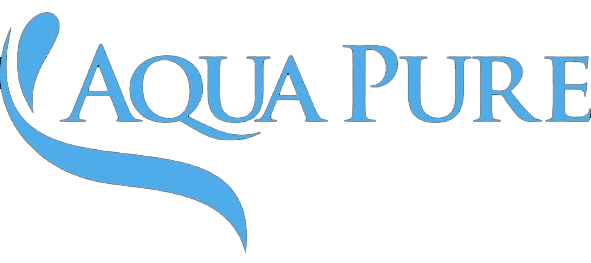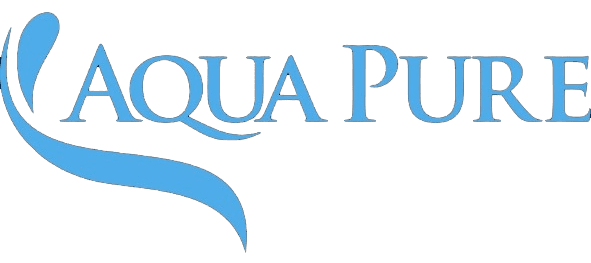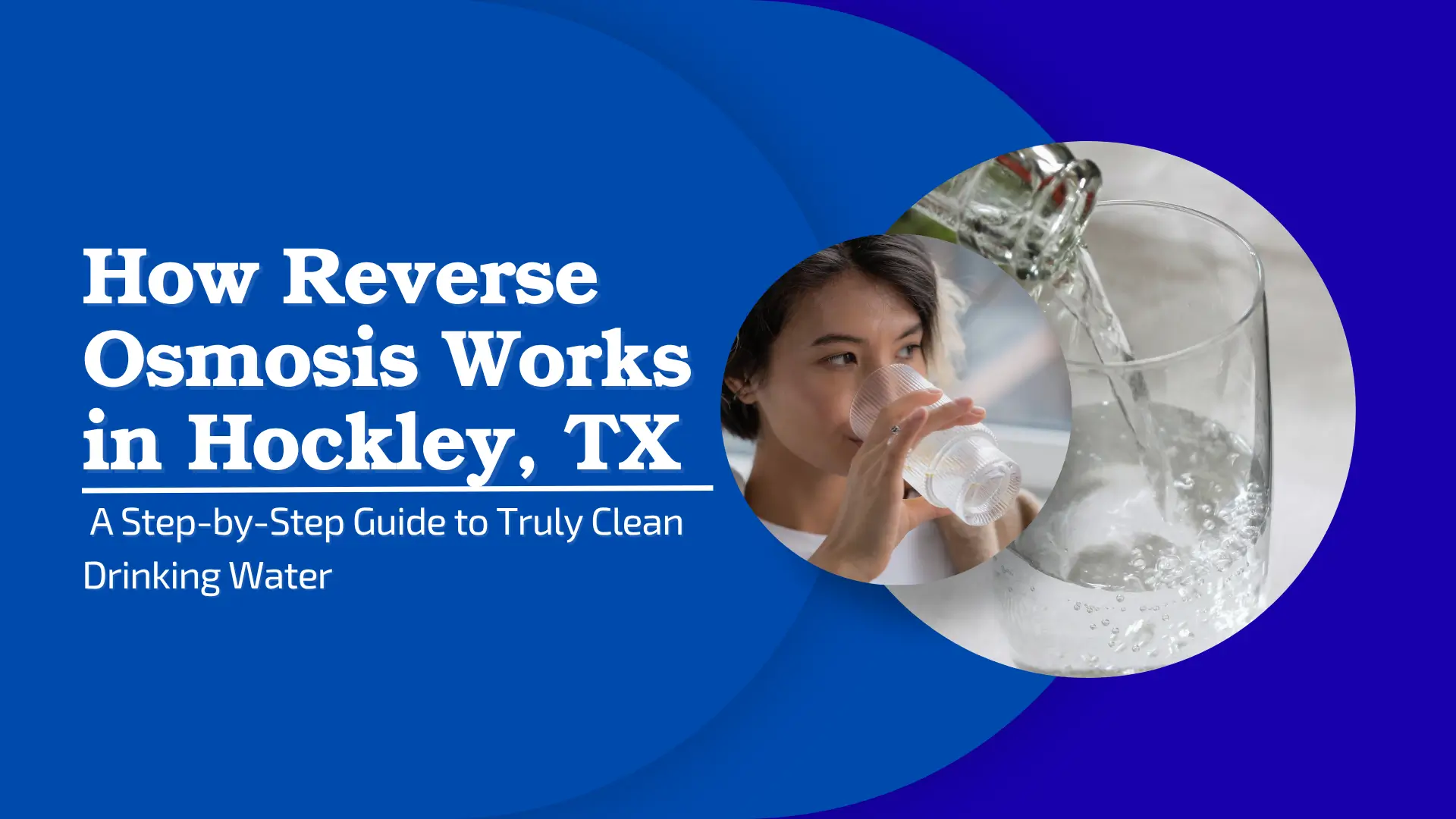What’s going on with Hockley water?
Hockley may meet federal standards under many regulated metrics, but several real-world issues affect local homes. Knowing these gives you the full picture rather than assuming “the city water is fine, end of story”.
Common issues we see in and around Hockley
- Hard water minerals (calcium, magnesium). While a specific number for Hockley isn’t always published, the wider Houston region falls into the “hard” category (~710 grains per gallon) and most of Texas is hard to very hard water. Hard water means more mineral scale, more soap residue and faster wear on appliances.
- Chlorine and disinfection by-products (DBPs). The water utility serving Hockley (the Katy Hockley Regional Water Plant) lists several disinfection by-products (like bromodichloromethane and dibromoacetic acid) at levels exceeding health-based guidelines (though still within legal limits). These are generated when chlorine (or other disinfectants) react with organic matter, and they add concern beyond just “chlorine taste”.
- Emerging contaminant risks like PFAS (so-called “forever chemicals”), nitrates, and sediment runoffespecially relevant if you have a private well. Many rural/outer-area homes near Hockley are subject to agricultural or storm-water runoff issues.
- Aging plumbing and local infrastructure. Older homes in Hockley may have plumbing or service lines that weren’t built for the modern standards. That can mean lead, copper, or other metal leachingeven when the water supply itself meets formal compliance.
- Taste/odor/appearance problems. Even if the drinking water is technically “safe” under federal standards, many residents report chalky feel, soap scum in showers, mineral buildup on fixtures, and odd tastes/odours.
What this means for you
- Health-wise: While most regulated contaminants may be within legal limits, exceedances of health-based guidelines (even for by-products) suggest a margin of riskparticularly for children, pregnant women, and anyone with a weakened immune system.
- Home & plumbing: Hard water causes mineral buildup in heaters, dishwashers, washing machines, and even pipes; that leads to shorter appliance lifespan and higher energy bills. Chlorine and DBPs can affect your skin, hair and sometimes trigger odor/taste complaints.
- Daily life: You may notice more spots on glassware, residue on shower doors, soap not foaming very well, or that your cookware gets cloudy more quickly.
In short: You’re facing a typical Texas-hard-water + suburban-runoff-plus-disinfection-by-products scenario. It’s not dramatic, but worth acknowledging. And that leads us to the question: how can we make your drinking water betterstarting with one of the most powerful tools: reverse osmosis.
The core science: how reverse osmosis works
Let’s walk through how an RO system converts “ordinary tap water” into water that’s filtered at a much deeper levelmicro-filtration that goes far beyond a simple pitcher filter.
1. Water enters your home system
Tap water is supplied by your water utility (or your well) to your house. It contains a mixture: minerals (hardness), chlorine or other disinfectants, possibly small amounts of heavy metals, DBPs, sediment, maybe trace PFAS or nitrates depending on source. You can test to know exactly what’s in your water.
2. Pre-filtration (sediment & carbon)
Most RO systems begin by filtering out the big stuff: sediment (sand, rust particles) and chlorine or chloramine (via activated carbon). Why? Because chlorine will damage the RO membrane if left unchecked. So you’ll typically see a sediment filter first then a carbon filter.
3. The RO membrane
Here’s the heart of the process: the water is driven under pressure through a semi-permeable membrane. This membrane allows water molecules through but blocks the majority of dissolved solidsminerals, heavy metals, nitrates, many PFAS, etc. The result: a “product water” (the filtered water you drink) and a “waste/flush water” (which carries away the rejected contaminants).
4. Post-filtration / polishing
After the membrane, many systems include a post carbon filter (sometimes called a “polishing” filter) to remove any remaining taste/odor. Some systems also add remineralization (to add back a small healthy amount of minerals for taste) or UV disinfection if you’re concerned about microbiological issues.
5. Delivery & storage
The purified water is delivered to your dedicated tap (usually under sink) or in some cases to the whole house (though whole-house RO is less common because of cost and waste-water trade-offs). You now have water that is far lower in dissolved contaminants and far better for drinking, cooking, and pets.
6. Why this matters in Hockley’s context
Because we know your region has hard water and disinfection-by-products (and potential trace emerging contaminants), RO addresses the “what remains after municipal treatment” part. The municipal system treats water to meet drinking standards, but it doesn’t guarantee removal of every trace contaminant (especially modern ones) and it doesn’t stop mineral content (hardness) or scale formation upstream in your home. RO gives you an extra layer of protection.
What happens when we don’t take action
Understanding why this matters is easier when we look at the effects of unfiltered or untreated water.
- Scale buildup: In water heaters, coffee machines, dishwashers you may notice white chalky deposits, less efficient heating, shortened lifespan.
- Soap & cleaning issues: Hard water reduces soap lather, leaves residue on skin/hair, leaves streaks on glass and shower doors, makes towels feel stiff.
- Taste or odour issues: Some people detect a faint “chemical” taste or smell (especially after heavy rains or when utilities change disinfectant residuals) which may lower water consumption or lead to more bottled-water usage.
- Metal and contaminant risks: Even though your public supply may comply under federal law, if your plumbing has older pipes or service lines, you risk trace lead/copper exposure. If you have a private well, you risk agricultural runoff, bacteria or nitrates.
- Health consequences: Over time, DBPs and other trace chemicals (even at low levels) can be of concernparticularly for infants, pregnant women, and anyone with compromised immune system. One study at the local utility shows levels of bromodichloromethane at about 6.7 times the EWG health guideline.
Bottom line: the water is likely “safe enough,” but you have real everyday impacts and marginal risks. That means smart preventative home filtration makes sense.
Practical steps for Hockley residents
Here’s how you can move from awareness to actionwith clear choose-your-own-adventure style steps.
Step A Test your water
Don’t assume: know.
- Review your local water utility’s Consumer Confidence Report (CCR) or annual quality report. For Hockley area, websites show 126 total contaminants detected and 9 above EPA standards (per one summary) though no formal violation since 2010.
- If you’re on a private well, test for hardness, nitrates, coliform bacteria, sediment, and ideally PFAS if you want the cutting edge.
- Inspect your home for signs: Does your glassware have chalky film? Is your soap less effective? Do you have white scale in your kettle or dishwasher? These are simple red flags.
- You may choose to get a professional water test that measures hardness (mg/L or grains), chlorine, heavy metals, nitrates, total dissolved solids (TDS), and perhaps PFAS.
Step B Identify the biggest issues for your home
- If you see significant scale, or your appliances are aging faster than you expect → Hard-water minerals are likely a big contributor.
- If you detect an odd taste/odour or know your system uses surface-water plus chlorine disinfection → DBPs or chlorine residual may be the culprit.
- If you have a well, or live in an older home with unknown pipe history → Metals (lead/copper) or agricultural runoff may be a bigger worry.
- If you want the highest-quality drinking/cooking water (for your children, pets, etc) → consider RO.
Step C Choose the solution(s) that fit
Here are realistic options, not fluffand where the local company Aquapure LLC fits naturally.
- Water softener: If hardness is your main issue (scale, soap/lather problems, appliance wear) then a dedicated softener makes a big difference. (See: Whole-house filtration: If your system has chlorine, DBPs, sediment or you want to protect all taps and showersnot just drinking waterthen a whole-house filter is appropriate. (See:
- Under-sink/point-of-use RO system: If your main goal is drinking and cooking waterespecially to remove heavy metals, nitrates, PFAS, DBPsthen a reverse osmosis system under your kitchen sink is ideal. Aquapure offers free installation, certified technicians, easy financing with $0 down, lifetime warranty, and has been Texas-owned and family-operated for over 10 years.
- Combination approach: Many Hockley homes benefit most from a softener + whole-house filter + RO for the kitchen. That way you protect appliances, showers, cleaning, and drinking water all in one go.
Step D Maintain and monitor
Whatever system you install, maintenance matters. Change cartridges or membranes as required; follow the manufacturer’s schedule; and re-test your water every year or whenever something changes (new plumbing, change in utility source, heavy rainfall events).
Local insights: Why Hockley needs this more than you might think
- Hockley is part of Harris County and neighbours Greater Houstontherefore, many of the same water-source and treatment issues apply (surface water sources, variable disinfectant residuals, hard water).
- The region doesn’t always publish granular hardness numbers for every MUD, but given Texas’s geology and typical treatment sources, you’re very likely dealing with “hard to very hard” water.
- The presence of DBPs in your local utility (even if within legal limits) means that layer of “extra protection” via RO is practical and cost-justified if you care about taste and health margins.
- For homes on wells (or transitioning between city and well), the variability is higherso testing is crucial.
- From a financial perspective: scale and mineral buildup silently shorten appliance life; investing in treatment now pays off in reduced repairs, lower energy bills and better resale value.
Frequently Asked Questions
Q: Is Hockley tap water safe to drink?
A: Yesyour main municipal suppliers are meeting federal standards, and there are no recent violations reported in many systems. But “safe” under federal standards isn’t the same as “ideal” for your drinking, cooking and appliance-health. That’s why many homeowners choose added protection.
Q: Do I need a water softener in Hockley?
A: Probably. Given the regional pattern of “hard water” in Texas (710 grains per gallon or more) and the visible signs of scale/soap issues many homeowners experience, a softener is a wise investment if you notice hard-water symptoms in your home. Q: How much does an RO system cost in Hockley?
A: Costs vary by home size, water quality and system type. Many providers (like Aquapure) offer $0 down, easy financing and lifetime warranties. The real value comes from reducing bottled-water use, removing trace contaminants, improving taste and extending appliance lifeso think of it as long-term value, not just upfront cost.
Q: What about PFASdo I need to worry here?
A: Emerging contaminants like PFAS are harder to monitor and may not show up in every CCR. If you have well water, live near industrial sites, or simply want the extra layer of protection, an RO system is one of the most reliable household investments to reduce PFAS and many other trace chemicals.
Q: Does a whole-house RO make sense?
A: While technically possible, whole-house RO is often overkill (and expensive) in typical suburban homes unless you have well water with very high TDS or a specialist use-case. Many homes use a softener for the whole house + RO at the kitchen sink for drinking/cookingthat gives the best balance.
Final thoughts
If you live in Hockley and you’ve ever wondered why your tea tastes a bit off, why your glassware is cloudy, or why your dishwasher seems to be working overtimeyou’re seeing the subtle signs of water that could be better. A well-chosen reverse osmosis system (especially paired with a softener or whole-house filter) gives you peace of mind, better taste, longer-lasting appliances and cleaner water for your family.
I



